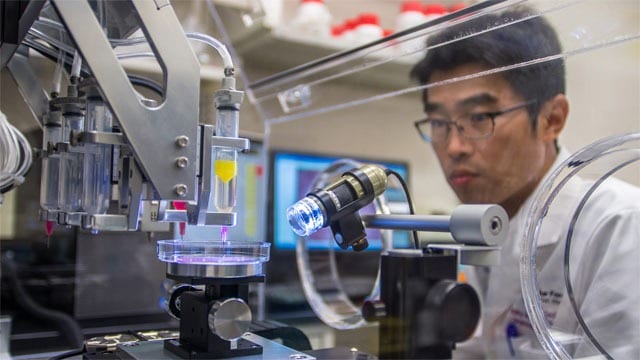Wake Forest Institute for Regenerative Medicine (WFIRM) scientists have improved upon the 3D bioprinting technique they developed to engineer skeletal muscle as a potential therapy for replacing diseased or damaged muscle tissue, moving another step closer to someday being able to treat patients.
.
Skeletal muscles are attached to bones by tendons and are responsible for the body’s movement. When they are damaged, there is often loss of muscle function because the nerves are no longer sending signals to the brain.
.
Treatment of extensive muscle defect injuries like those caused by improvised explosive devices (IEDs) on the battlefield, for instance, is difficult and often requires reconstructive surgery with muscle grafts. Effective nerve integration of bioengineered skeletal muscle tissues has been a challenge.
.
“Being able to bioengineer implantable skeletal muscle constructs that mimics the native muscle to restore function represents a significant advance in treating these types of injuries,” said lead author Ji Hyun Kim, PhD, of WFIRM. “Our hope is to develop a therapeutic option that will help heal injured patients and give them back as much function and normalcy as possible.”
Click here to view original web page at www.technologynetworks.com





0 Comments